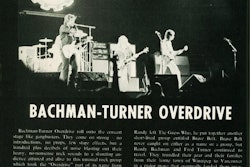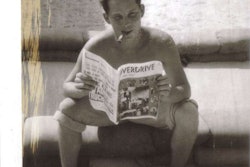Going Nowhere Fast
Mother Road leads to freedom if your mind doesn’t get in the way
Driving along an original stretch of Historic U.S. Route 66 just outside of Albuquerque, I feel as though I am riding with a ghost, or maybe ghosts. With my radio station blaring old country music, I forget for the moment that it’s 2011. I find myself in a long- forgotten time where old-timers’ tales and déja vu effortlessly blend into a comfortable surrealism.
Perhaps it is my dad’s love of the West that lures me here. For a majority of the two and a half decades he drove long-haul, it was the openness of the vast landscapes west of the Mississippi River that had a pull on his spirit. Local driving jobs were mere temporary distractions. The West always called him back.
Or maybe it’s the romanticized Route 66 that casts such a spell. This nostalgic “Mother Road” lures many people who come here seeking her past glory, which promised excitement and a better tomorrow just around the next curve.
Traces of her once-gaudy roadside attractions can still be found along what’s left of the road. It’s a reminder of where we came from and, a little sadly, where we might be heading. The idealistic era of America’s carefree heyday seems more ideal with each passing year.
Route 66 was one of the first major transcontinental U.S. highways for cars and trucks and the first to be completely paved. It was conceived as a major artery to connect main streets of rural towns to urban areas from Chicago to Los Angeles. Promoters called it the Main Street of America during its early years.
Many early truckers found the road to be an exceptional thoroughfare to move goods east and west.
The idealistic era of America’s carefree heyday seems more ideal with each passing year.
During the 1930s, Route 66 was an escape route for Dust Bowl farming families from Oklahoma, Arkansas, Texas and Kansas seeking work and a new start in California. It was this period that John Steinbeck wrote about in The Grapes of Wrath, in which he coined the Mother Road moniker. This tragic migration actually spawned businesses for rural towns along its path and added grit to its character.
The post-World War II boom cemented Route 66’s place in history, as many Americans in the East, thanks to affordable cars, cheap gas and disposable income, took to the roadways for family vacations. It was an era of prosperity and the quest for adventure.
The golden years of Route 66 were short-lived. The creation of the Interstate Highway System in the 1950s signaled the end. Progress soon bypassed most of its rich heritage. By 1985, Route 66 was decommissioned and its scattered remnants were left to only to those with a romantic notion of what it had once been.
As I drift further away from small towns dotting the landscape, Marty Robbins’ “El Paso City” comes on the radio. The haunting melody and lyrics pull me further into the experience. For those not familiar with the song, it’s an indirect sequel to an earlier Robbins’ ballad about a cowboy who kills a man who makes advances on the Mexican woman he loves. The cowboy escapes a hanging and later returns, only to be killed.
In “El Paso City,” the song’s narrator is flying in an airplane and eerily recalls the story. By the end of the song, he thinks to himself, “I get the feeling sometime / In another world I lived in El Paso … Could it be that I could be / The cowboy in this mystery / That died there in that desert sand so long ago?”
On the drive back toward Albuquerque, I take Interstate 40 and it breaks the spell I’ve been under. Everything is moving much faster — traffic, signs, exits, modern roadside accommodations. I’m passed by numerous big trucks trying to make deadlines and deliveries. I think about how much trucking has changed in recent years, and how much change lies ahead. New hours-of-service rules, electronic onboard recorders, CSA …
Even in the beauty of the vast openness, it suddenly feels so overwhelming and stressful — a sharp contrast to the beginning of this journey.
It is then I realize: I hadn’t been riding with the ghost of my dad or the spirits of countless people who long ago traveled the simple road I had been on earlier. I had simply, and briefly, experienced the object of man’s persistent, unexplainable quest, the thing that drives many people to become truck drivers in the first place — freedom.









